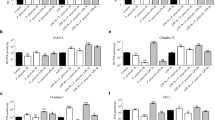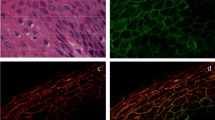Abstract:
We identified connexins 26 and 32 in human oral mucosa. The presence of the connexins indicates the presence of gap junctions in this tissue. However, immunofluorescence study found no significant differences in the expression of the connexins between patients with aphthons stomatitis and controls. Irsogladine maleate, which reinforces gap junctional intercellular communication in vitro, was effective for the treatment of transient and relapsing aphthous stomatitis, as well as symptomatic and drug-induced aphthous stomatitis. It was also useful for prevention of episodes of relapsing aphthous stomatitis, with daily administration preverting recurrence of stomatitis for more than 4 years one patient. These findings suggest that irsogladine maleate accelerates the wound healing process in oral mucosa by reinforcing gap junctional intercellular communication among oral mucosal cells; and that it is useful for the treatment and prevention of aphthous stomatitis.
Similar content being viewed by others
Author information
Authors and Affiliations
Additional information
(Received Jan. 27, 1998; accepted July 24, 1998)
Rights and permissions
About this article
Cite this article
Hara, A., Murata, T., Uemura, R. et al. Identification of connexins in human oral mucosa and therapeutic effect of irsogladine maleate on aphthous stomatitis. J Gastroenterol 34, 1–6 (1999). https://doi.org/10.1007/s005350050208
Issue Date:
DOI: https://doi.org/10.1007/s005350050208




